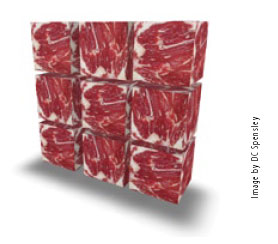Less than a week ago researchers in Japan confirmed a way to extract images directly from brains. Yes, you read that correctly; in a nutshell: by hooking you up to this machine everyone can now see what you are thinking, because it will be shown in a monitor. I had this reply in my Twitter stream when I tweeted about it, and although I have not yet seen that movie it is nonetheless very easy to imagine this invention being taken right out of a science fiction gig. (Being the shameless otaku that I am, my personal memory that this news recalled is none other than Japan’s anime ambassador, Doraemon.)
I often have people asking me what I think of the newest mind-blowing inventions the world has to offer (which is one of the reasons why this blog was created). Perhaps surprisingly to some, I never throw out horrible paranoiac scenarios of nightmarish dystopias people commonly take as “critical” reviews of a certain technology. While I do acknowledge the potential new narratives of paranoia such technologies — and especially mind-reading technologies — will engender, I like to look at technology the way I look at bodies, Lacanian style — i.e., as the false representative, the lacking signifier of the subject.
Being able to record one’s thought into an image on the computer screen is one of the basic tenets of posthuman fluidity. After all, if video games can read your mind, why shouldn’t the computer be able to see your mind?
Here, however, I have a very basic question: will our mind, after being replicated into a computer screen, remain our mind? Will my mind not, rather, take the position of an “undead” mind, a mind that is both mine and not mine at the same time, giving me the uncanny experience akin to listening to a recording of my own voice, a voice both mine and not mine at the same time? In the domain of the voice, we have horror movies like The Exorcist, in which a ghostly intrusion is symbolized by the changing of the voice. Similarly, we also have scenarios like the Imperius Curse in Harry Potter, in which a Death Eater intrusion is symbolized by the changing of a victim’s mind.
What this implies, however, is a much more radical thesis: today, with neuroscience and other mind-reading technologies, the mind reveals its inherent split: my mind is not my mind. (Or, to put it in Hegelian tautology-as-contradiction: my mind is my mind.) It is no longer the age-old “Cartesian” split between the mind and the body — we are now forced to realize that even without the body, the mind is already inherently split from within. Yes, we can extract minds, read them, project them onto screens, record them and store them, build them from individual neurons, etc., but the fact remains that there is an irreducible kernel behind its presence, its irreducible (misrecognizing) reflexivity. After all is said and done, we still have a gaping void in the middle of the thinking mind, its “true” presence (compared to the “undead” simulation of the projections on the screen, which is not fully our mind, etc.), what Žižek calls “the unbearable lightness of being no one”.
It is here that we may come up with another definition of the posthuman subject: the posthuman subject is the subject whose mind is undead, a subject whose externalized mind as such loses its phenomenological vigor of living presence and turns into a zombie.
As an additional note, it is fun to imagine the birth of “mind art” in the future with this technology — far from needing any motoric skills, the artist would only utilize his sharp concentration to create stunning artworks. Like, you know, porn.




